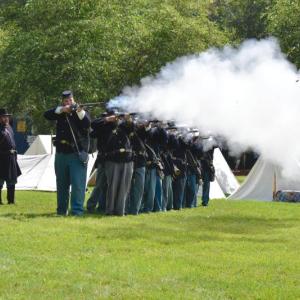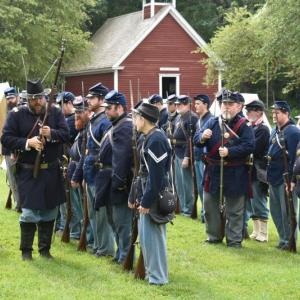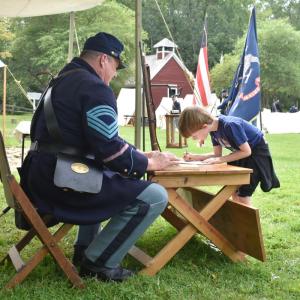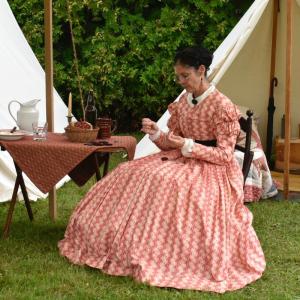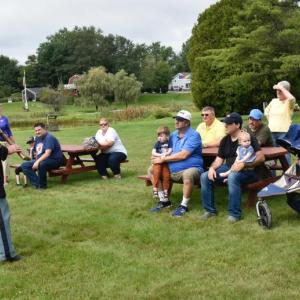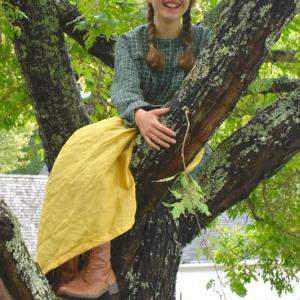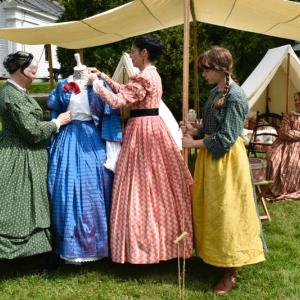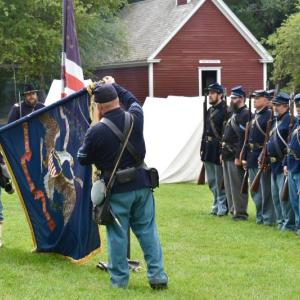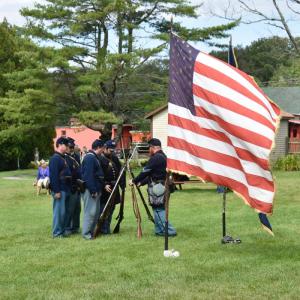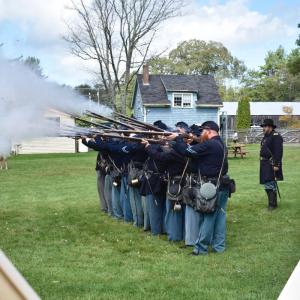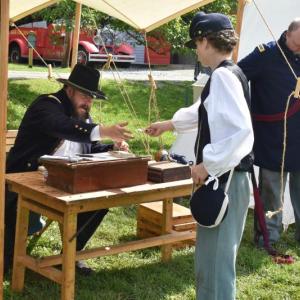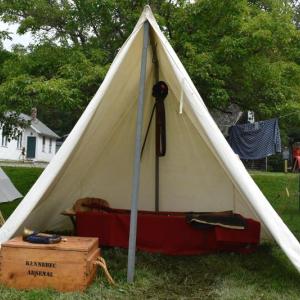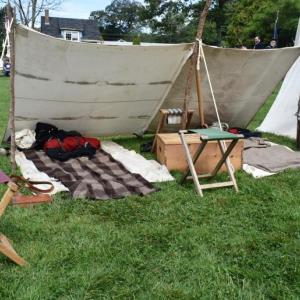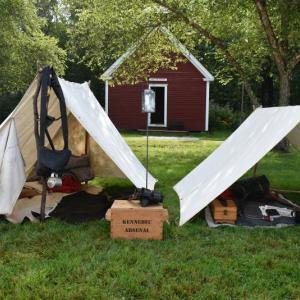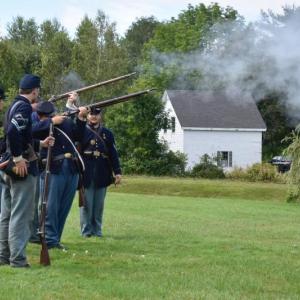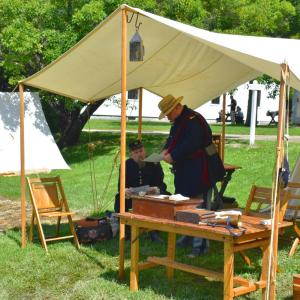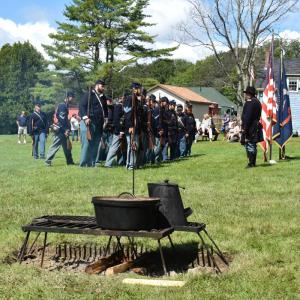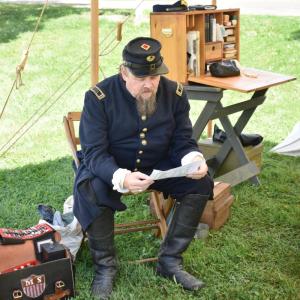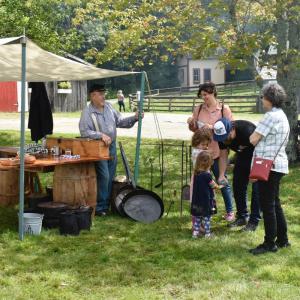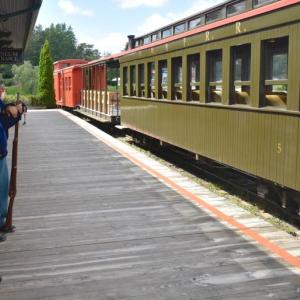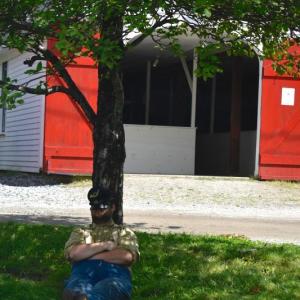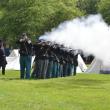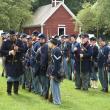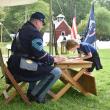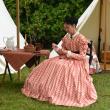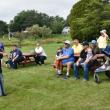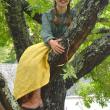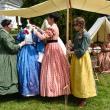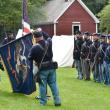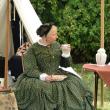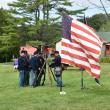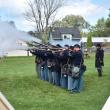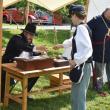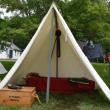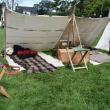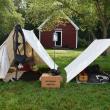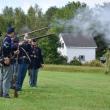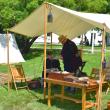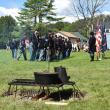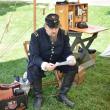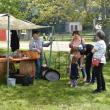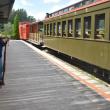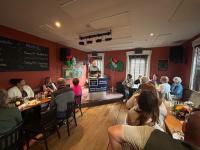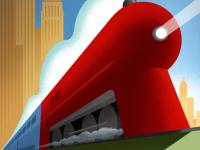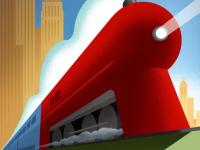Reenactors bring Civil War history to life
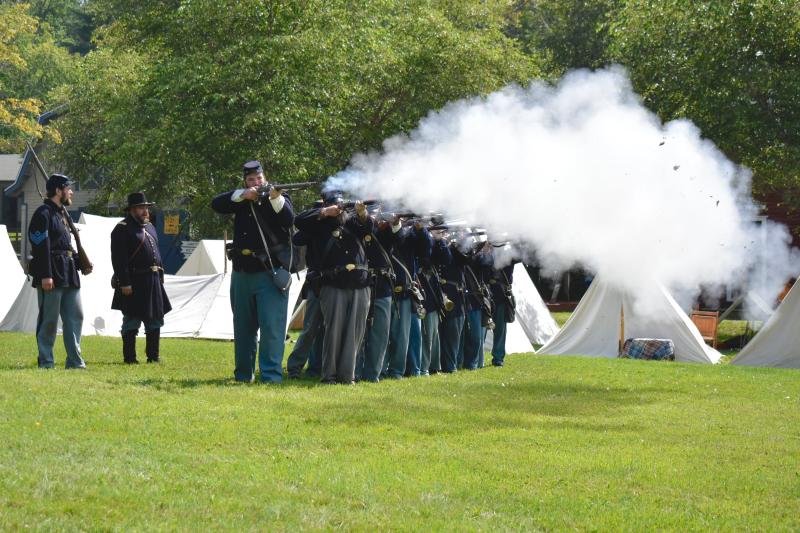 The Third Maine Infantry Company A practices musket drills at Boothbay Railway Village Museum Aug. 26. FRITZ FREUDENBERGER/Boothbay Register
The Third Maine Infantry Company A practices musket drills at Boothbay Railway Village Museum Aug. 26. FRITZ FREUDENBERGER/Boothbay Register
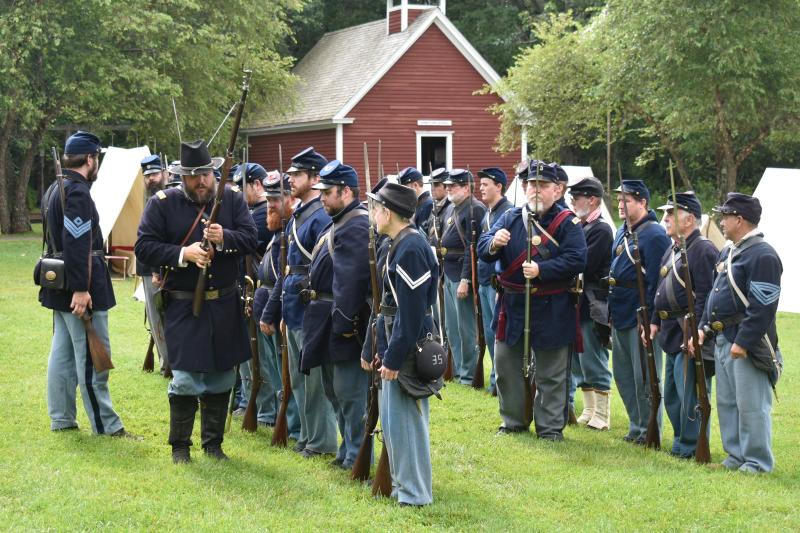 Captain Matt Bray inspects his troops’ firearms. FRITZ FREUDENBERGER/Boothbay Register
Captain Matt Bray inspects his troops’ firearms. FRITZ FREUDENBERGER/Boothbay Register
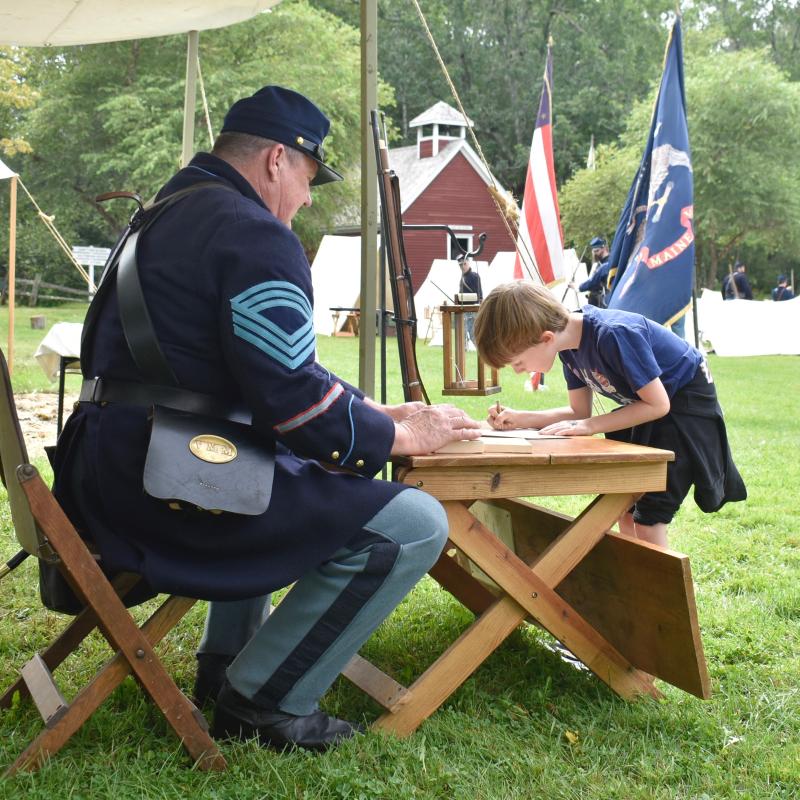 Preston Parise, 7, enlists. According to the enlisting officer, Parise was standing on a sign that read “18,” so, technically, he was “over 18” when he joined the Army. FRITZ FREUDENBERGER/Boothbay Register
Preston Parise, 7, enlists. According to the enlisting officer, Parise was standing on a sign that read “18,” so, technically, he was “over 18” when he joined the Army. FRITZ FREUDENBERGER/Boothbay Register
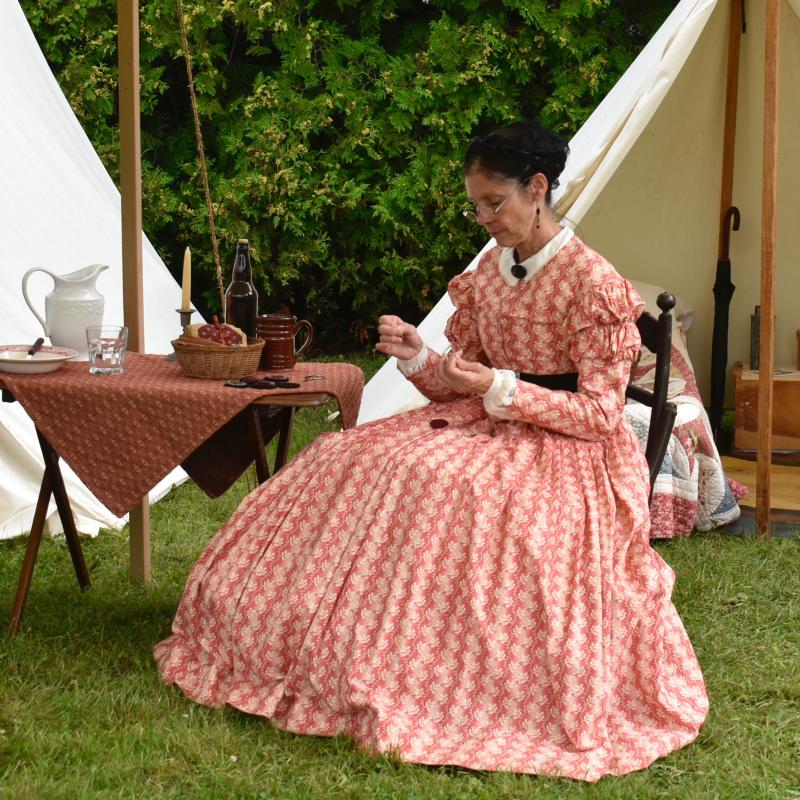 Dianne Thompson sews a penny rug. FRITZ FREUDENBERGER/Boothbay Register
Dianne Thompson sews a penny rug. FRITZ FREUDENBERGER/Boothbay Register
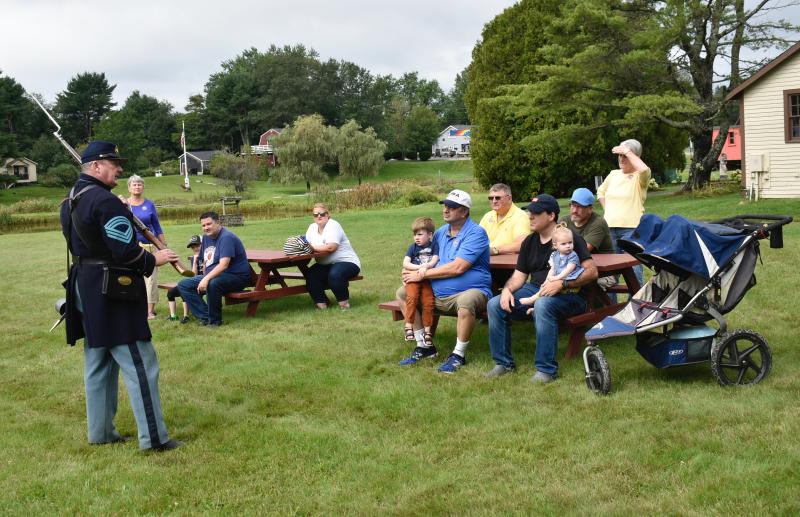 Robert Pierce explains military drills and demonstrations to Railway Museum visitors. FRITZ FREUDENBERGER/Boothbay Register
Robert Pierce explains military drills and demonstrations to Railway Museum visitors. FRITZ FREUDENBERGER/Boothbay Register
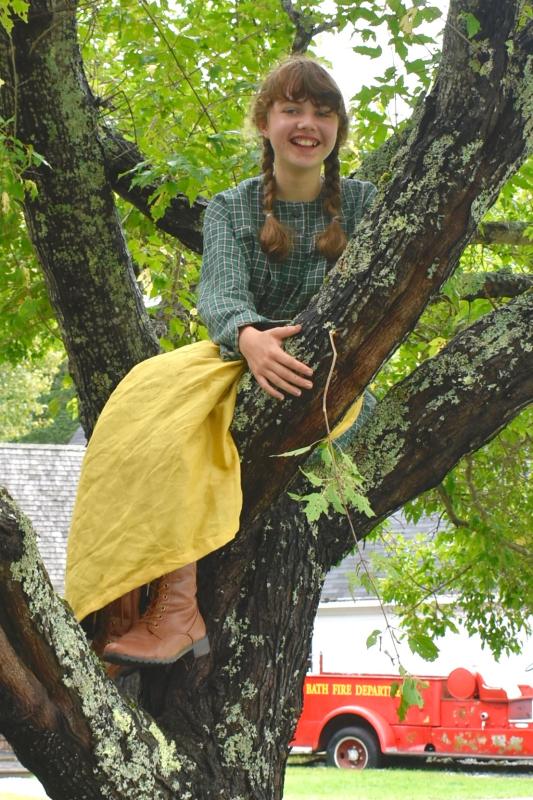 Hadassah Rego, 11, said climbing a tree like this would be “deemed unladylike, according to women of the time.” FRITZ FREUDENBERGER/Boothbay Register
Hadassah Rego, 11, said climbing a tree like this would be “deemed unladylike, according to women of the time.” FRITZ FREUDENBERGER/Boothbay Register
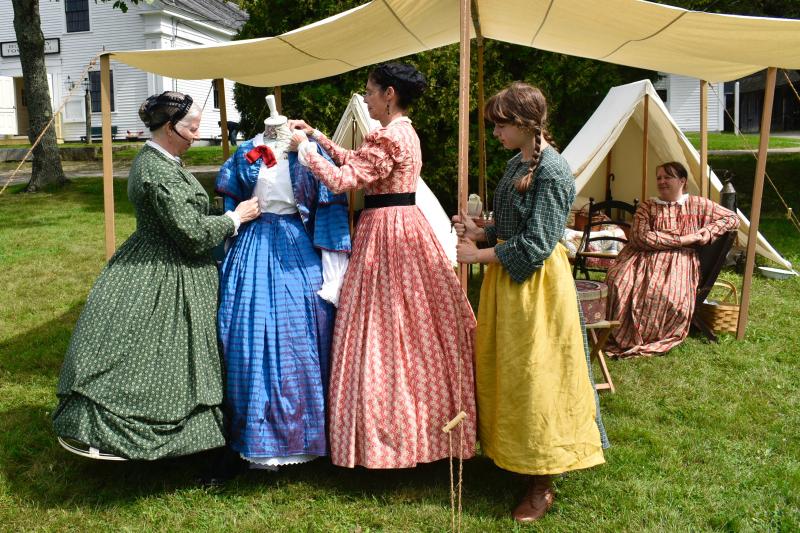 Carolyn Lawson, left, leads a talk on women’s fashion with other civilian volunteers. FRITZ FREUDENBERGER/Boothbay Register
Carolyn Lawson, left, leads a talk on women’s fashion with other civilian volunteers. FRITZ FREUDENBERGER/Boothbay Register
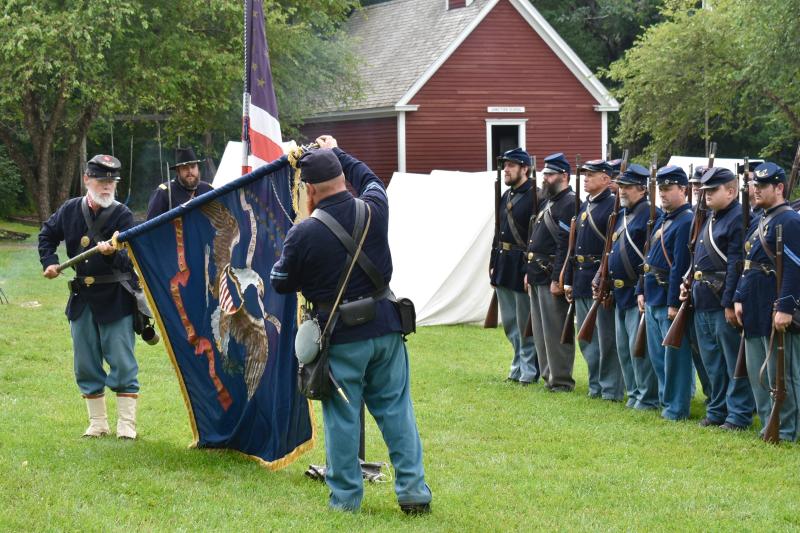 FRITZ FREUDENBERGER/Boothbay Register
FRITZ FREUDENBERGER/Boothbay Register
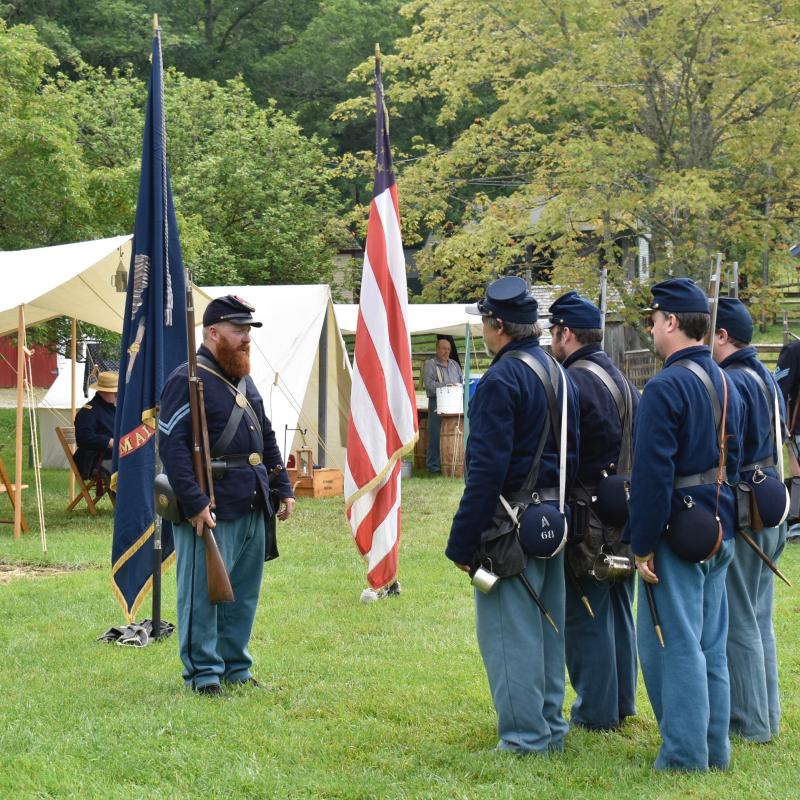 FRITZ FREUDENBERGER/Boothbay Register
FRITZ FREUDENBERGER/Boothbay Register
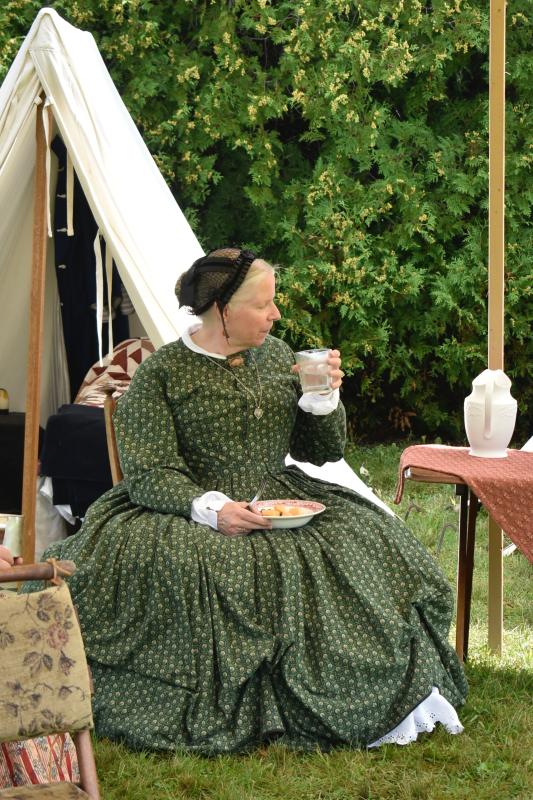 FRITZ FREUDENBERGER/Boothbay Register
FRITZ FREUDENBERGER/Boothbay Register
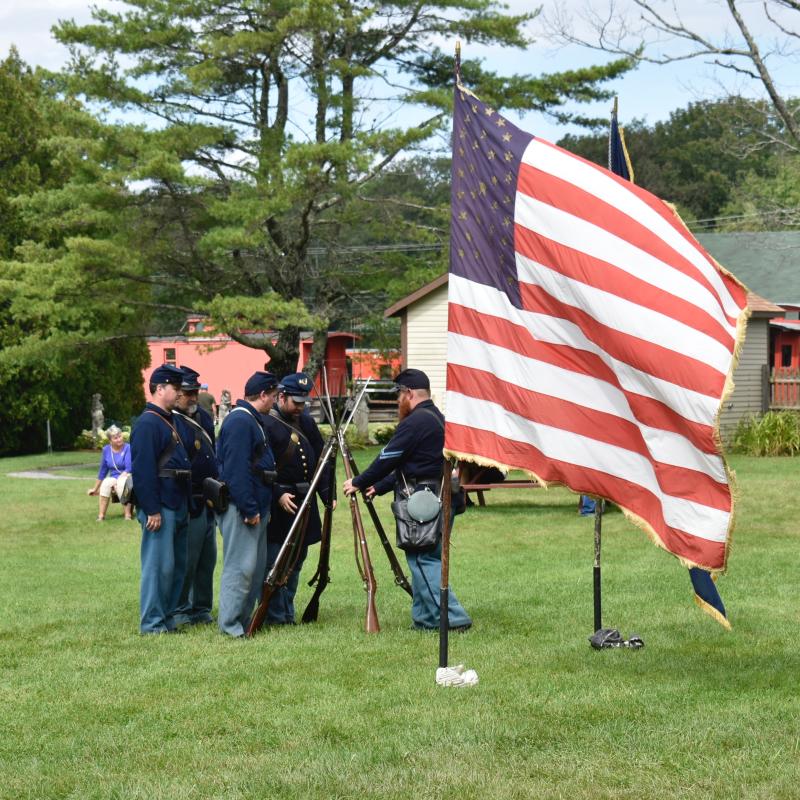 FRITZ FREUDENBERGER/Boothbay Register
FRITZ FREUDENBERGER/Boothbay Register
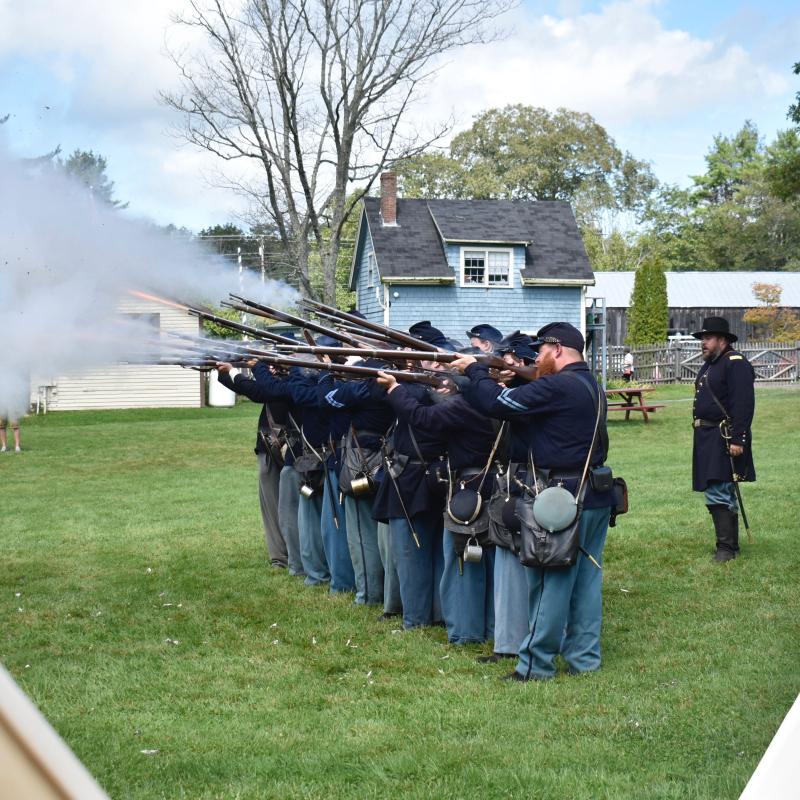 FRITZ FREUDENBERGER/Boothbay Register
FRITZ FREUDENBERGER/Boothbay Register
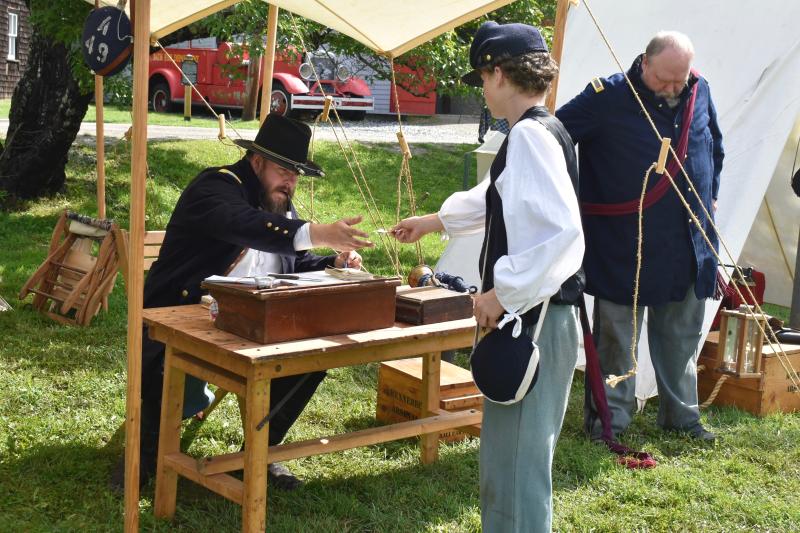 FRITZ FREUDENBERGER/Boothbay Register
FRITZ FREUDENBERGER/Boothbay Register
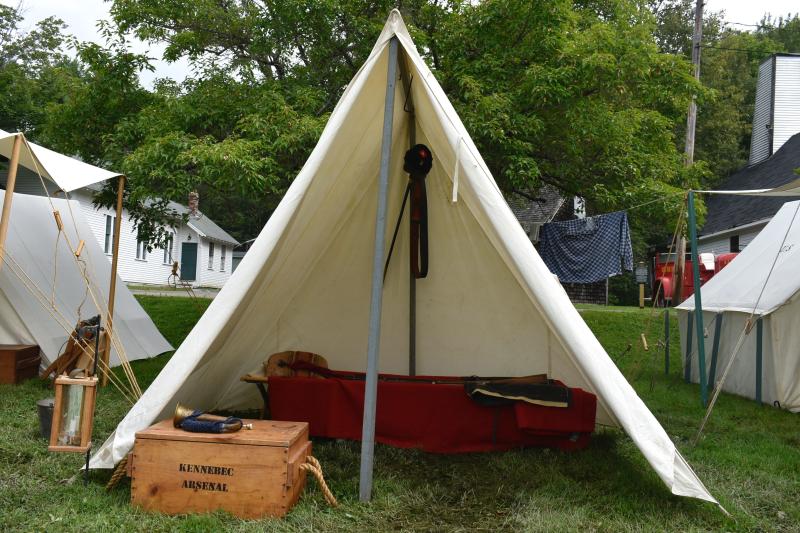 FRITZ FREUDENBERGER/Boothbay Register
FRITZ FREUDENBERGER/Boothbay Register
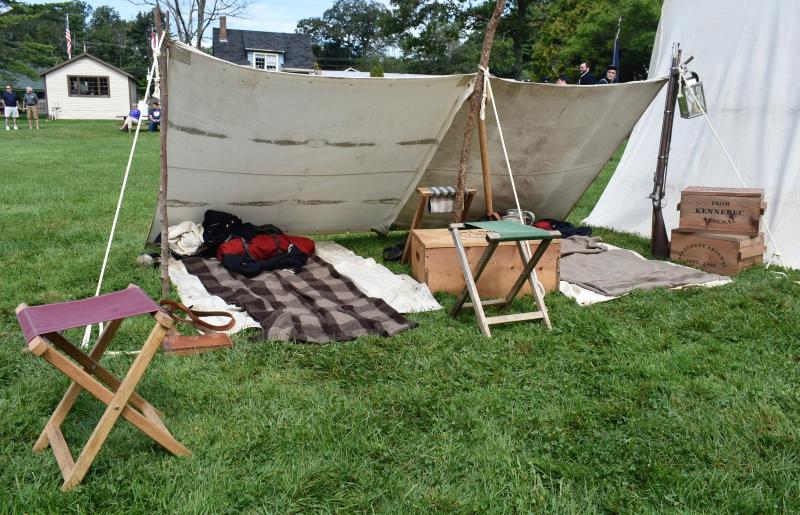 FRITZ FREUDENBERGER/Boothbay Register
FRITZ FREUDENBERGER/Boothbay Register
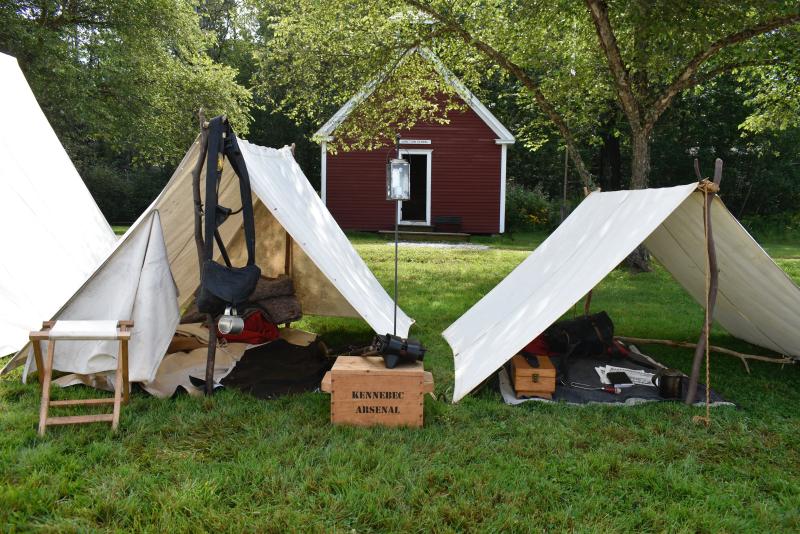 FRITZ FREUDENBERGER/Boothbay Register
FRITZ FREUDENBERGER/Boothbay Register
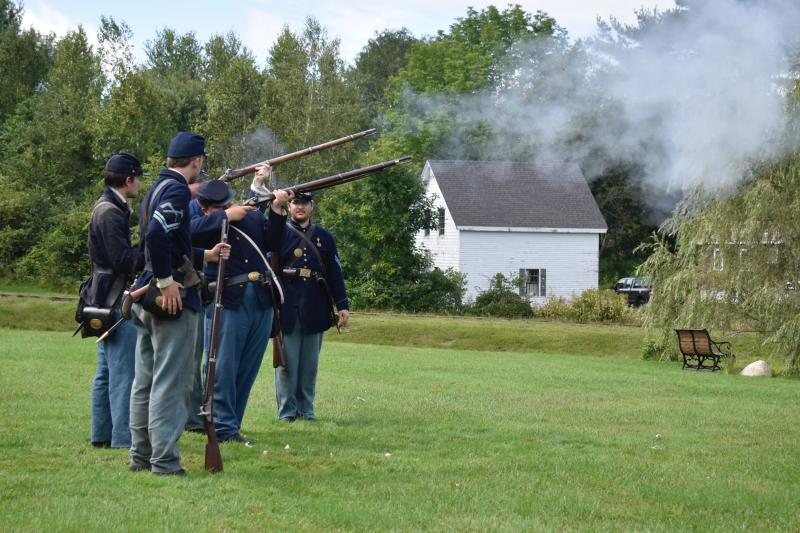 FRITZ FREUDENBERGER/Boothbay Register
FRITZ FREUDENBERGER/Boothbay Register
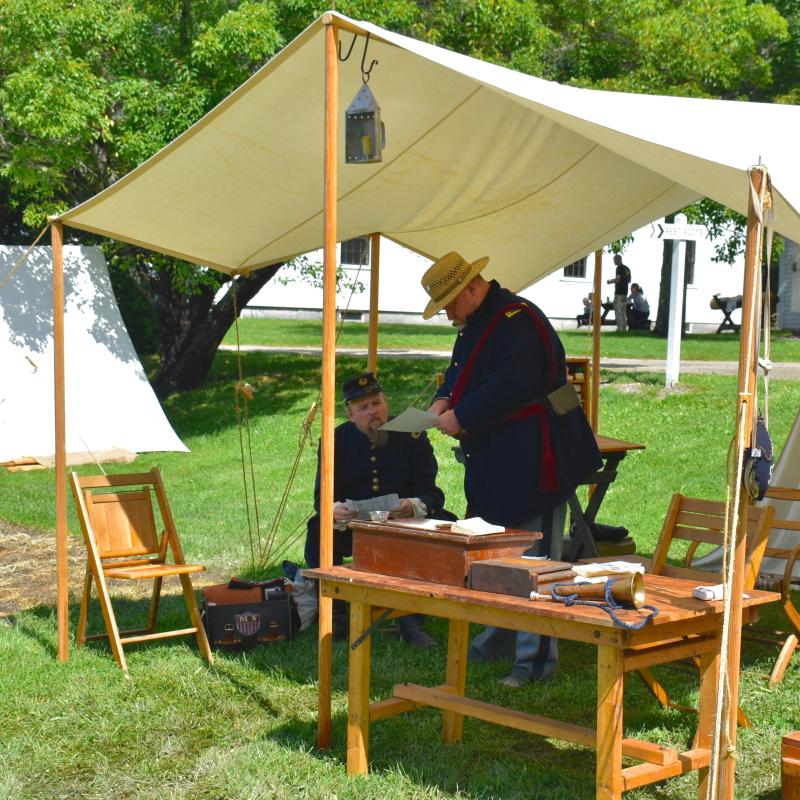 FRITZ FREUDENBERGER/Boothbay Register
FRITZ FREUDENBERGER/Boothbay Register
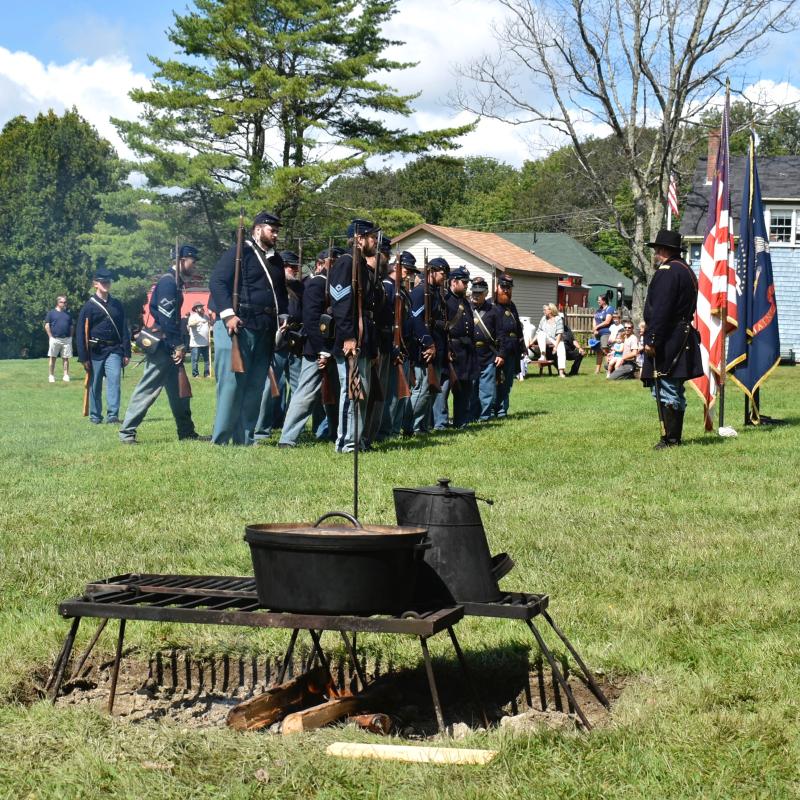 FRITZ FREUDENBERGER/Boothbay Register
FRITZ FREUDENBERGER/Boothbay Register
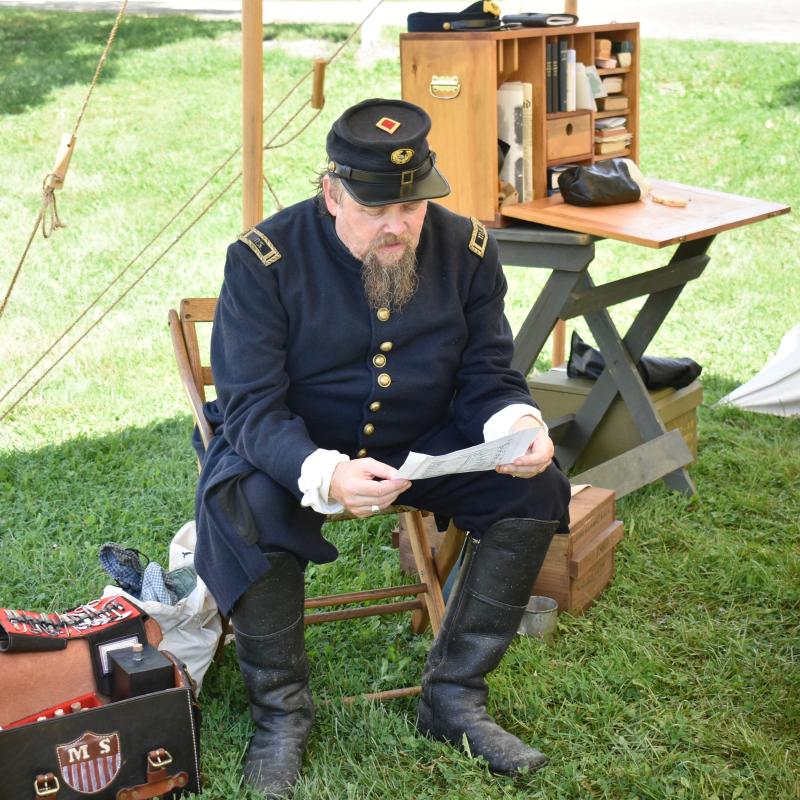 FRITZ FREUDENBERGER/Boothbay Register
FRITZ FREUDENBERGER/Boothbay Register
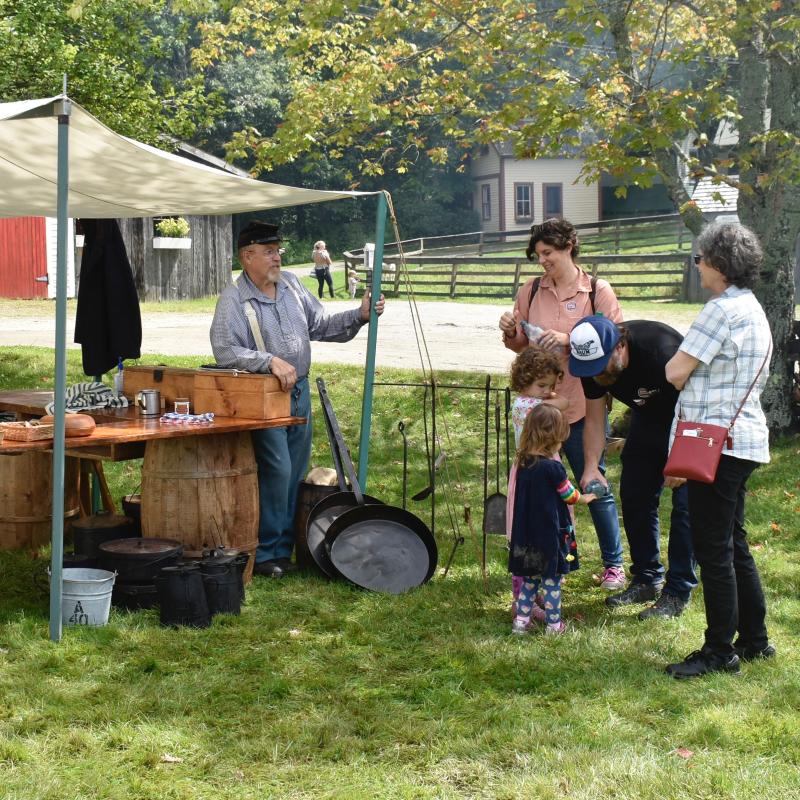 FRITZ FREUDENBERGER/Boothbay Register
FRITZ FREUDENBERGER/Boothbay Register
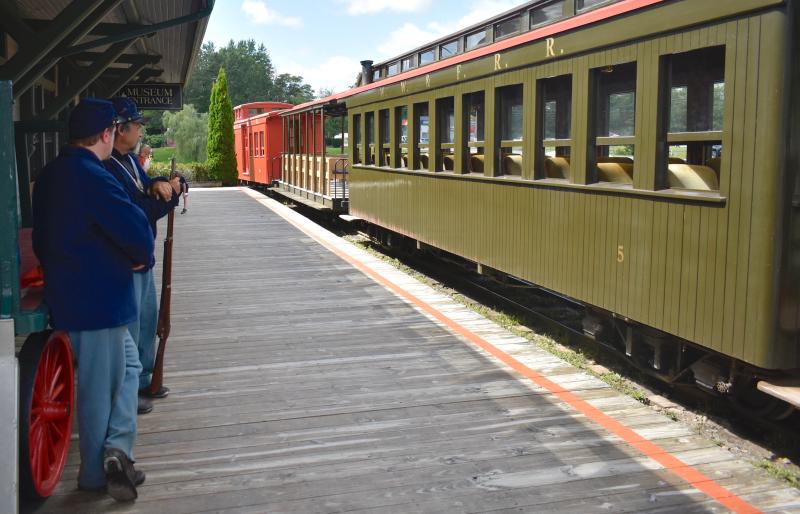 FRITZ FREUDENBERGER/Boothbay Register
FRITZ FREUDENBERGER/Boothbay Register
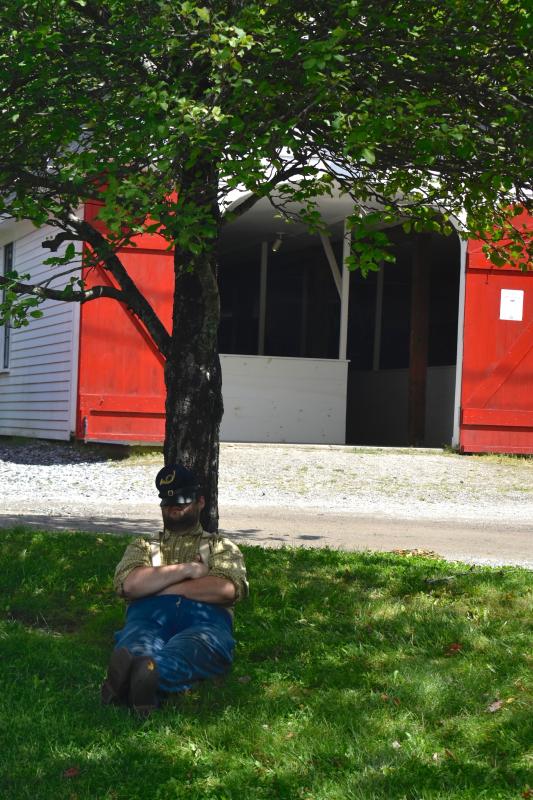 FRITZ FREUDENBERGER/Boothbay Register
FRITZ FREUDENBERGER/Boothbay Register
 The Third Maine Infantry Company A practices musket drills at Boothbay Railway Village Museum Aug. 26. FRITZ FREUDENBERGER/Boothbay Register
The Third Maine Infantry Company A practices musket drills at Boothbay Railway Village Museum Aug. 26. FRITZ FREUDENBERGER/Boothbay Register
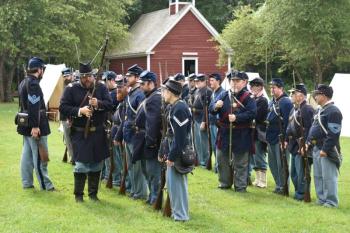 Captain Matt Bray inspects his troops’ firearms. FRITZ FREUDENBERGER/Boothbay Register
Captain Matt Bray inspects his troops’ firearms. FRITZ FREUDENBERGER/Boothbay Register
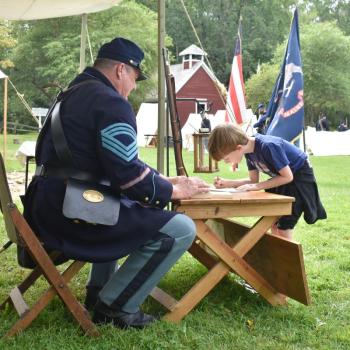 Preston Parise, 7, enlists. According to the enlisting officer, Parise was standing on a sign that read “18,” so, technically, he was “over 18” when he joined the Army. FRITZ FREUDENBERGER/Boothbay Register
Preston Parise, 7, enlists. According to the enlisting officer, Parise was standing on a sign that read “18,” so, technically, he was “over 18” when he joined the Army. FRITZ FREUDENBERGER/Boothbay Register
 Dianne Thompson sews a penny rug. FRITZ FREUDENBERGER/Boothbay Register
Dianne Thompson sews a penny rug. FRITZ FREUDENBERGER/Boothbay Register
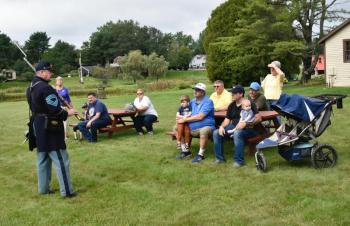 Robert Pierce explains military drills and demonstrations to Railway Museum visitors. FRITZ FREUDENBERGER/Boothbay Register
Robert Pierce explains military drills and demonstrations to Railway Museum visitors. FRITZ FREUDENBERGER/Boothbay Register
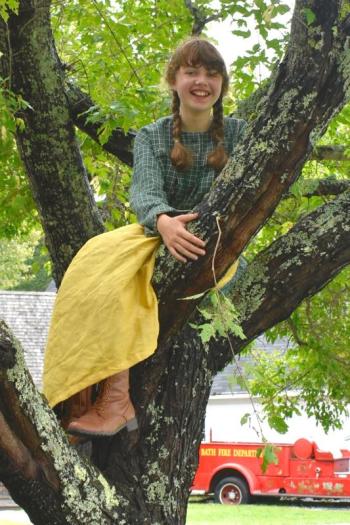 Hadassah Rego, 11, said climbing a tree like this would be “deemed unladylike, according to women of the time.” FRITZ FREUDENBERGER/Boothbay Register
Hadassah Rego, 11, said climbing a tree like this would be “deemed unladylike, according to women of the time.” FRITZ FREUDENBERGER/Boothbay Register
 Carolyn Lawson, left, leads a talk on women’s fashion with other civilian volunteers. FRITZ FREUDENBERGER/Boothbay Register
Carolyn Lawson, left, leads a talk on women’s fashion with other civilian volunteers. FRITZ FREUDENBERGER/Boothbay Register
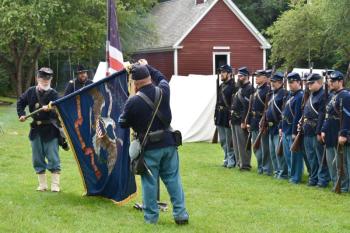 FRITZ FREUDENBERGER/Boothbay Register
FRITZ FREUDENBERGER/Boothbay Register
 FRITZ FREUDENBERGER/Boothbay Register
FRITZ FREUDENBERGER/Boothbay Register
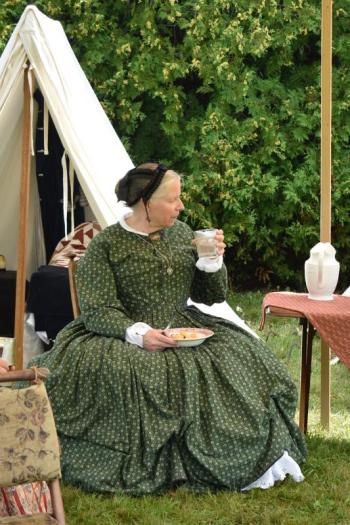 FRITZ FREUDENBERGER/Boothbay Register
FRITZ FREUDENBERGER/Boothbay Register
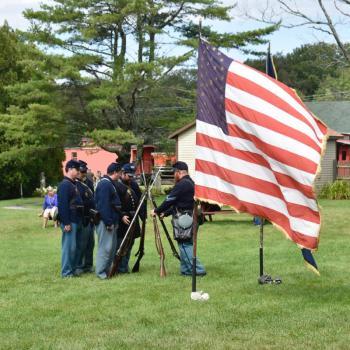 FRITZ FREUDENBERGER/Boothbay Register
FRITZ FREUDENBERGER/Boothbay Register
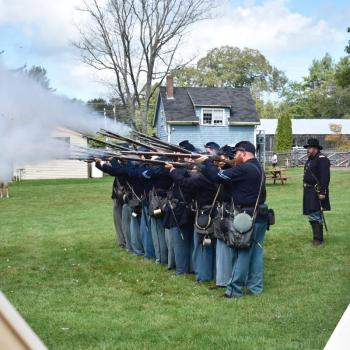 FRITZ FREUDENBERGER/Boothbay Register
FRITZ FREUDENBERGER/Boothbay Register
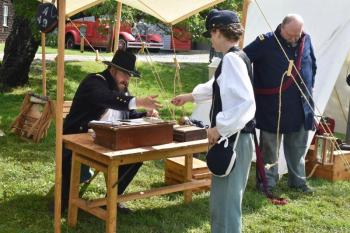 FRITZ FREUDENBERGER/Boothbay Register
FRITZ FREUDENBERGER/Boothbay Register
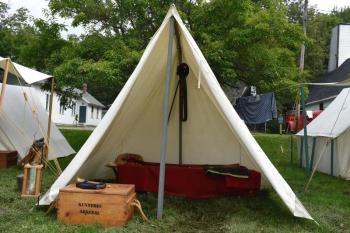 FRITZ FREUDENBERGER/Boothbay Register
FRITZ FREUDENBERGER/Boothbay Register
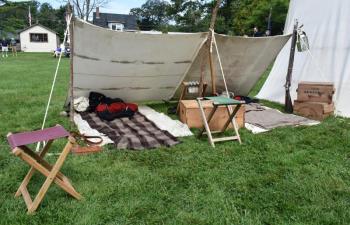 FRITZ FREUDENBERGER/Boothbay Register
FRITZ FREUDENBERGER/Boothbay Register
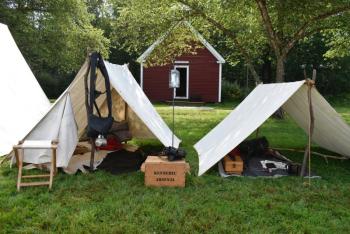 FRITZ FREUDENBERGER/Boothbay Register
FRITZ FREUDENBERGER/Boothbay Register
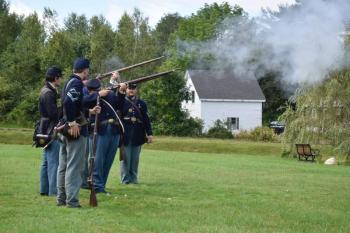 FRITZ FREUDENBERGER/Boothbay Register
FRITZ FREUDENBERGER/Boothbay Register
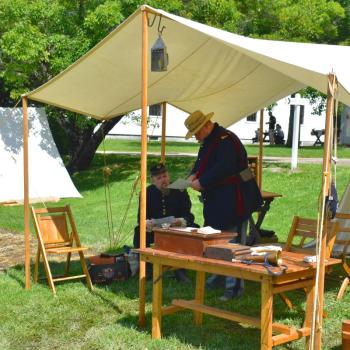 FRITZ FREUDENBERGER/Boothbay Register
FRITZ FREUDENBERGER/Boothbay Register
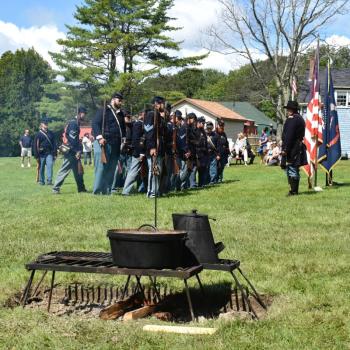 FRITZ FREUDENBERGER/Boothbay Register
FRITZ FREUDENBERGER/Boothbay Register
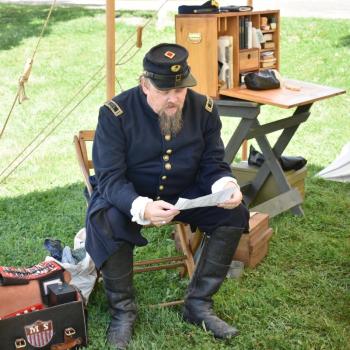 FRITZ FREUDENBERGER/Boothbay Register
FRITZ FREUDENBERGER/Boothbay Register
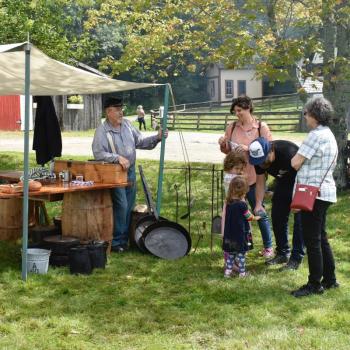 FRITZ FREUDENBERGER/Boothbay Register
FRITZ FREUDENBERGER/Boothbay Register
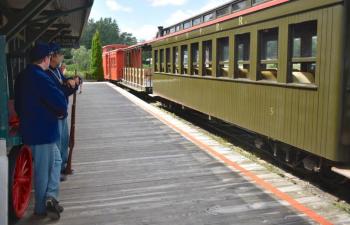 FRITZ FREUDENBERGER/Boothbay Register
FRITZ FREUDENBERGER/Boothbay Register
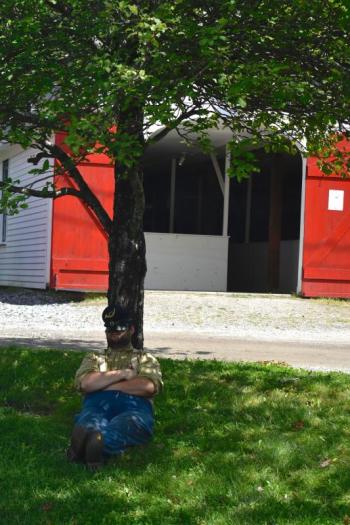 FRITZ FREUDENBERGER/Boothbay Register
FRITZ FREUDENBERGER/Boothbay Register
The sound of musket fire and shouting filled the air this past weekend as the Third Maine Infantry Company A came to Boothbay Railway Village Museum. The non-profit reenactment group hosted the event Aug. 26 and 27 in Boothbay with demonstrations, talks and other period activities to bring Civil War history to life.
Matt Bray, captain of the company, said its purpose is to help preserve history, especially Maine’s history and its role in the Civil War. Formed in Bath, the Third Maine Infantry Company A was the first regiment from Maine that signed up to fight for three years in the Civil War, according to Bray. He said they fought in almost every major Civil War engagement that Army of the Potomac was in, with honor.
Bray said most of the modern-day company’s volunteers were from Maine, but some came from as far as Massachusetts and Vermont to show visitors how soldiers and camp followers functioned in daily camp life.
"The idea being that we can help show, in person, what you might read about or what you might see in a movie up close and personal," Bray said.
Volunteers camped at the museum, cooked baked beans on campfires, cleaned their muskets and did military drills. Bray said they use the same training manual soldiers did in the Civil War.
"We do infantry drill the same way that they did then,” he said. “The men learn from the very beginning. We have a couple of members that are learning in the exact same way from the exact same language that the soldiers would have learned in 1861 when they first joined ...”
Bray, 38, has been reenacting since he was 14 after he was inspired by the movie “Gettysburg” and Maine historical figure Joshua Chamberlain. Now, he leads the organization and encourages others to join. The group accepts members as young as 12; they cannot carry muskets until they are 16.
The group’s activities are not always easy: Bray recalled a recent reenactment of the 160th anniversary of the Battle of Antietam where the unit his group portrayed only had knapsacks and did not eat for two days. He said his group camped on the battlefield and crossed Antietam Creek waist deep in water, on empty stomachs.
“When you've slept in a tent, in the rain, on the ground and then marched 10 miles in wool, you get a different feel for what it was like,” he said. “What we found is that it's the kids that really have that extreme thirst for learning and knowledge, they really like that.”
Bray said there were 28 soldiers in his company over the weekend, almost the Company’s exact size at the Battle of Gettysburg. They represent one company of a regiment that would have been part of 10 companies. The reenactment soldiers are teens, men and women who dress to pass as men.
"That is true to history,” said Carolyn Lawson, coordinator for the civilians in the group. “There is documentation of 400 women enlisted in the union army, of course under false pretenses. They were pretending to be men. Some of them were discovered, some weren't."
Lawson was at the event demonstrating the life of civilians and camp followers. She and other volunteers talked about the role of women and children at the camp and during the period. She especially focused on women’s fashion, surrounded by layers of fabric, and many misconceptions.
"Women were practical and they weren't stupid,” she said. “Most all of this has a practical reason for the shape and the cut. The different garments have a reason, it wasn't just random ‘Let's decide to wear three layers of petticoats.’ Women were active, they were busy taking care of their home, they were raising their children, they were climbing mountains and they had to do it all in the clothing that was acceptable at the time."

